Setting up an HPLC lab at AMPATH/MTRH
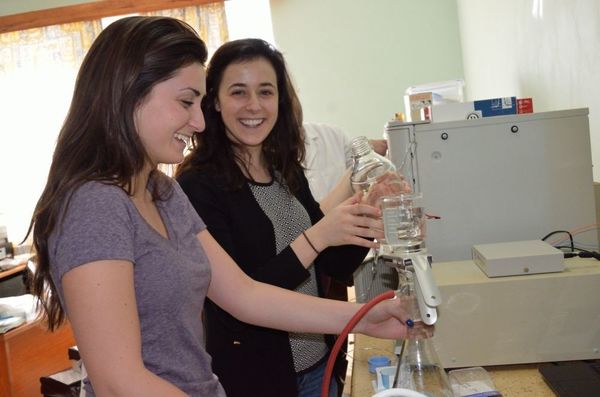
Tabitha Healy (left) and Paulina Eberts (right) setting up lab equipment and working on amoxycillin assay (Jan 2016).
Tabi and Paulina also diagnosed SAM's degasser problem; back at Notre Dame, they reconditioned a degasser unit, shipped it to Eldoret, and now both HPLCs are functional.
HPLC lab at AMPATH/MTRH (May 26, 2015)
Two Waters 2695 high-performance liquid chromatography systems with Waters 2487 UV-Vis detectors are sited in the ISO-certified AMPATH reference lab at Moi Teaching and Referral Hospital.
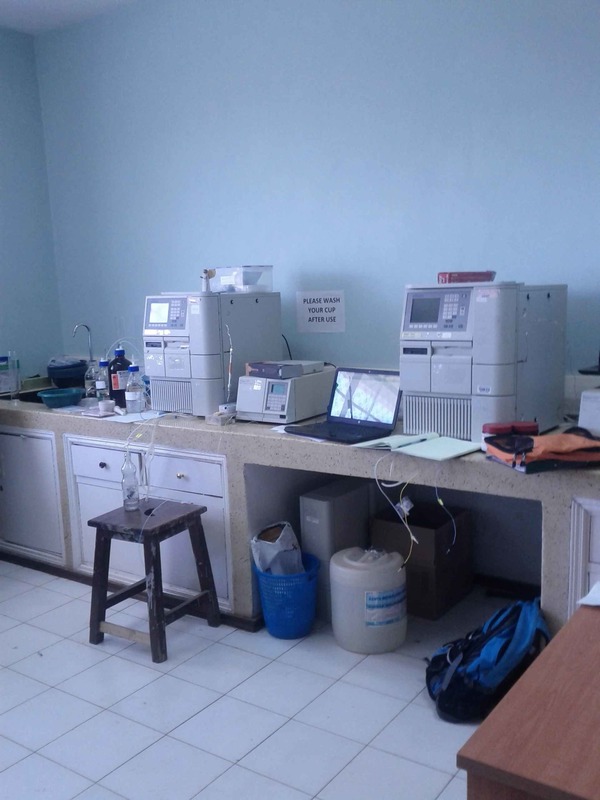
Facility plan: This is the only operational HPLC system in Western Kenya, so it is positioned to provide unique services in pharmaceutical characterization, therapeutic drug monitoring, and research support. The instruments are connected via videoconferencing software to a duplicate instrument sited at Prof. Lieberman's lab at the University of Notre Dame, which will provide training and troubleshooting assistance.
In 2015/2016, our goals are capacity development for HPLC operators and working towards ISO certification of the HPLC lab. We anticipate focusing on analysis of pharmaceuticals and veterinary medications collected in Western Kenya. During this year we hope to provide 2-4 operators with a two-week HPLC training course at an ISO-certified instrumental analysis labs, such as the CePAT site in Accra, Ghana.
For 2016-2017, our goal is to obtain ISO certification and establish several protocols for therapeutic drug monitoring on a recharge basis. This service will help to sustain the HPLC facility and will support educational outreach activities and regional capacity development for instrumental analysis.
As the staff becomes more skilled with method validation and development, collaborations with the research groups at Moi University and AMPATH will be a growth area.
May 25, 2015: some basic info about HPLC
I may move this link later, but for now please enjoy this Prezi about the HPLCs we're setting up at AMPATH/MTRH. Use the arrows to step through the presentation, or use your mouse to pan and zoom around the presentation.
May 22, 2015: Visiting the FDA lab in Accra, Ghana
The FDA has separate labs for testing different products; the pharmaceutical analysis lab is well fitted out and ISO certified. Here's the HPLC room:
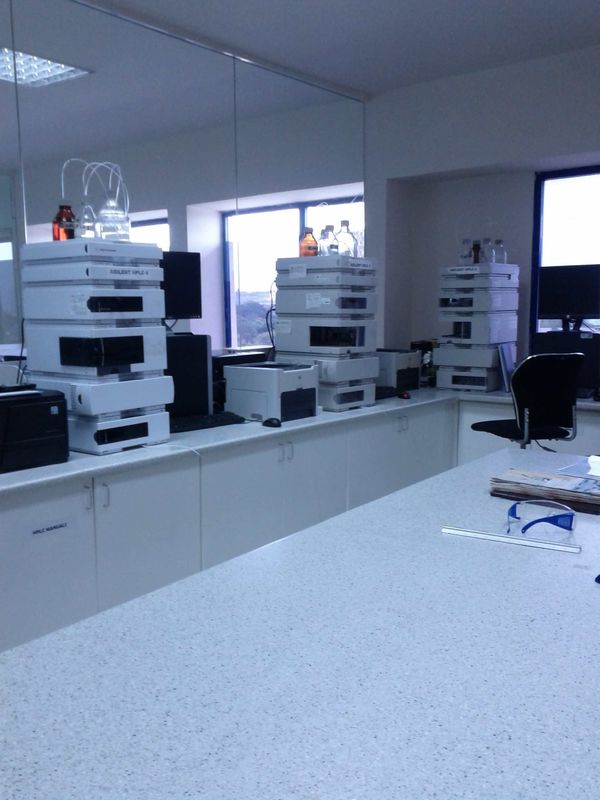
The lab manager and technicians all downed work and tried out PADs; we ran through all my samples and they brought in standards to run. Here are Jane Baah, Evelyn Agyei, and Dina Dzifa Amefinu:
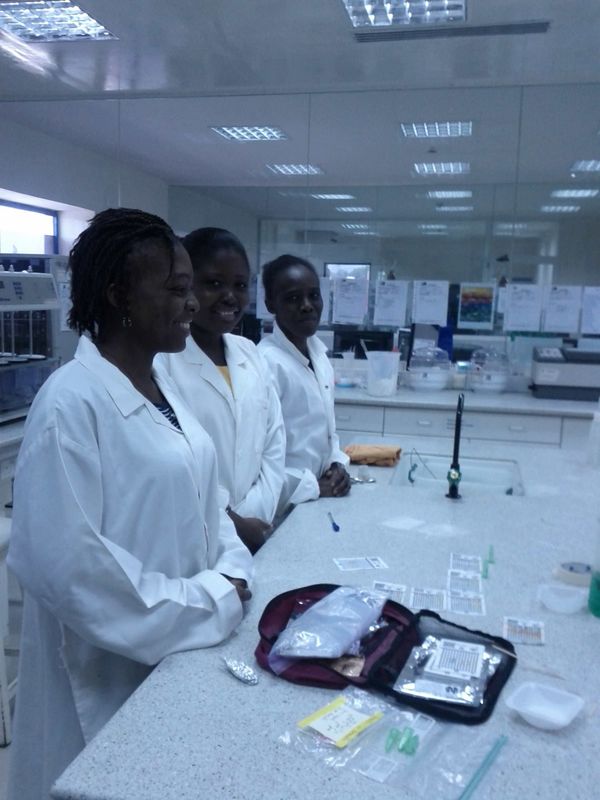
The lab had three Minilab kits, which I'd never seen in real life. They kindly opened up the mystery box and here's what it looks like inside:
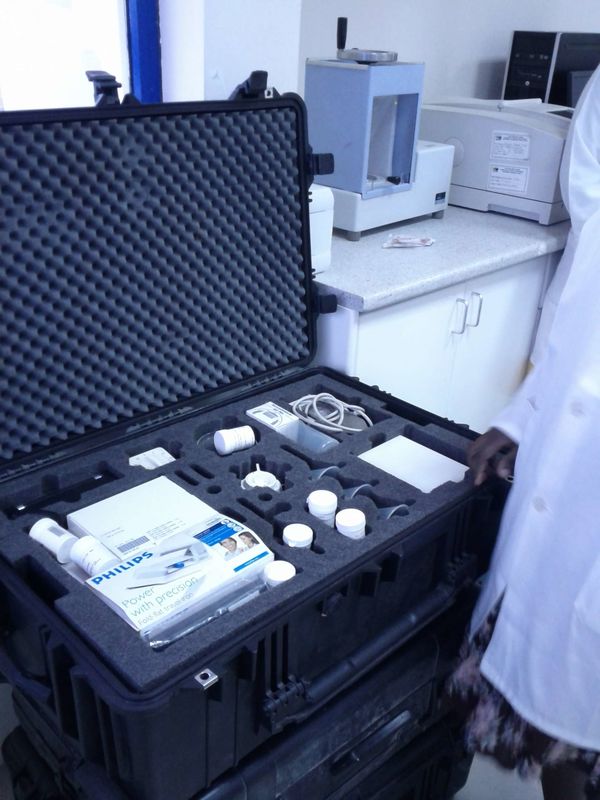
May 21, 2015: Visiting the Center for Pharmaceutical Advancement and Training in Accra, Ghana
So, I have nipped over to Western Africa to visit the Center for Pharmaceutical Advancement and Training. This was set up by USP in May 2013 and it's a brand-new facility, ISO certified, which does all kinds of pharmacopeia analyses on a fee-for-service basis. They also do training workshops, and that is certainly on our to-do list.
Here is Geoffrey Togoh, my guide on the lab tour.
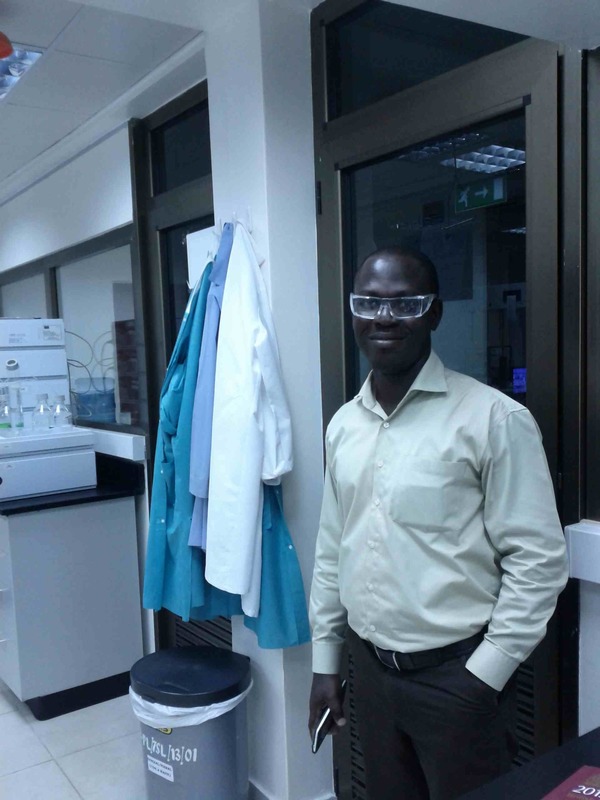
Some of the lab instrumentation; this is an automated dissolution tester. The pill is placed in one of the glass "cups" and liquid is added and stirred at controlled rate and temperature; solution is removed continually for UV-vis analysis to see how fast the pill dissolves:
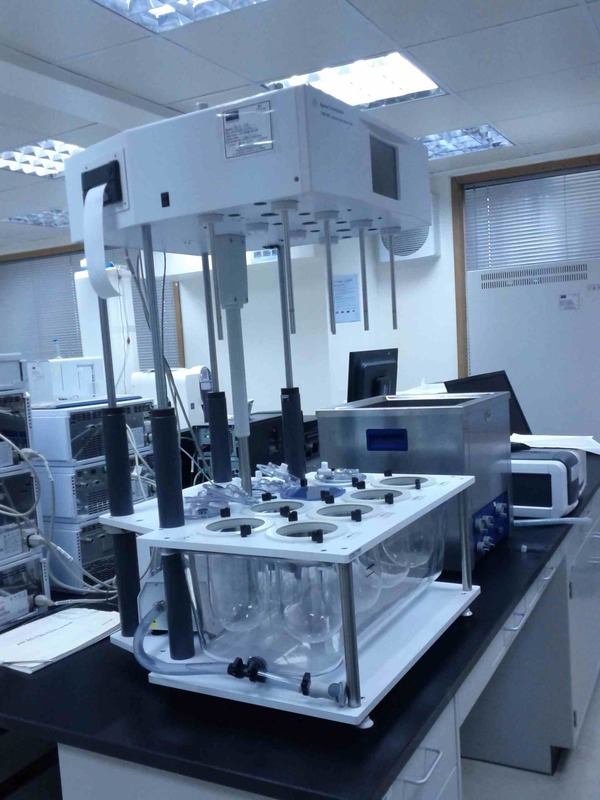
The training lab has four HPLCs (Agilant and Perkin-Elmer).
May 18, 2015: BBC crew here to shoot a short segment for "Health Check"
Hannah McNeish and Zoe Flood getting a shot set up
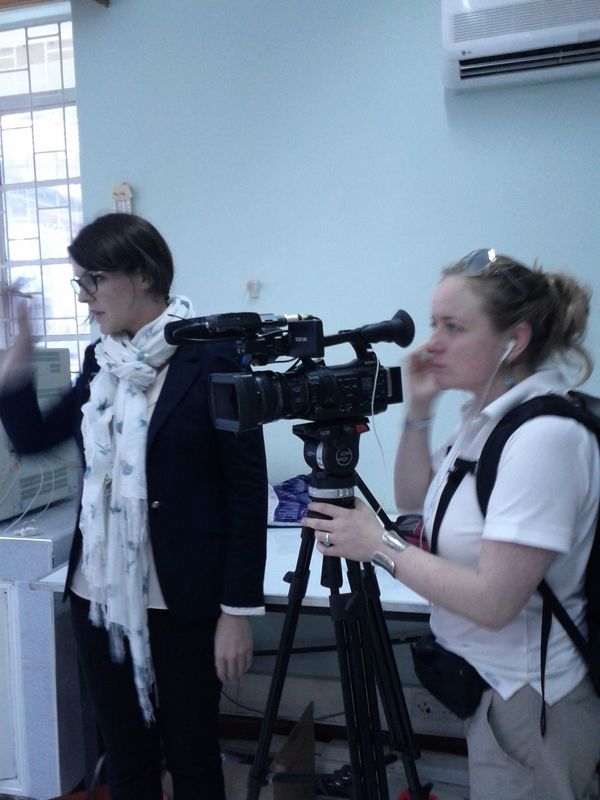
Zoe perches on the counter to film students learning to run the tests

May 18, 2015: Use of PAD to compare two products
We ran PAD tests on some injectable antibiotics, stated to be a product called Kinem. The antibiotic is supposed to contain a beta lactam called imipenem and a potentiating agent called cilastatin. Vials from one shipment had attracted the suspicion of one of the AMPATH pharmacists because the fluid in the "suspicious" vials had a dark brown color and foul odor when dissolved, but this drug is supposed to be water white or pale yellow. The "good" vial, which came from another batch of the medicine, had only a faint color and no strong odor. Even though we haven't tested imipenem or cilastatin as pure APIs, Mercy wants to give it a try on the PAD, so we run several PADs with each sample.
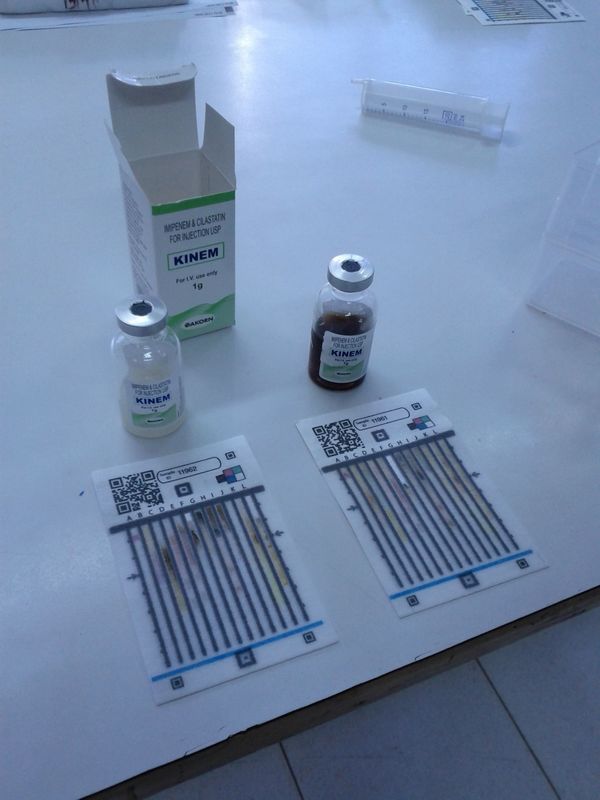
The PADs are sufficiently different that it seems likely there are chemical differences between these two samples. This is going on the "to do" list for the HPLC. Maybe one of the REU students will be interested in working on injectable antibiotics.
May 16, 2015: Weekend setup
Phelix is dry priming one of the instruments..we have not hooked up a column yet.
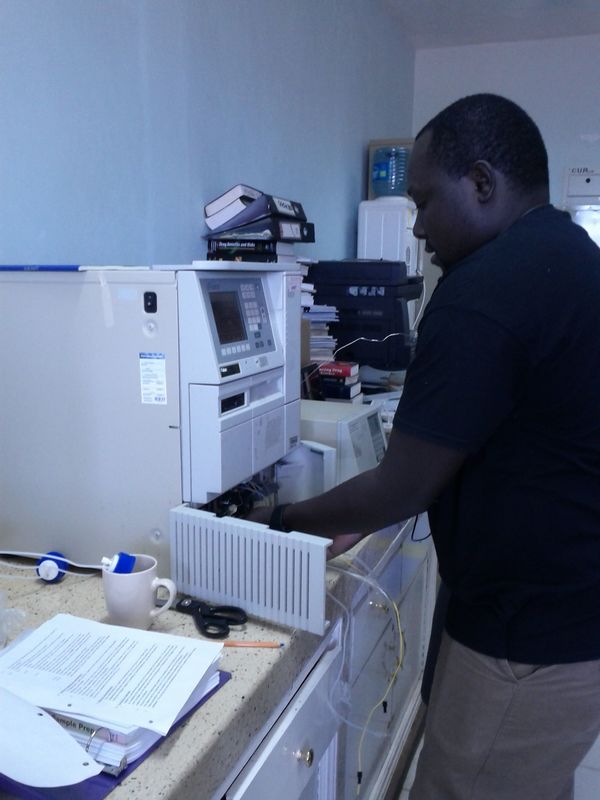
Yes, that's a coffee cup holding the solvent.
Both instruments are now awaiting our shipment of HPLC solvents and standards.
May 15, 2015: Crates are in Eldoret
Negotiations were fruitful and the crates arrived by truck this morning. One crate weighs 220 kg, the other is 280 kg, and there is no mechanical hoist or loading dock at the hospital. How are we going to get the crates down out of the truck?
Here is the unloading process. Five guys, two poles, miraculously no-one was crushed.
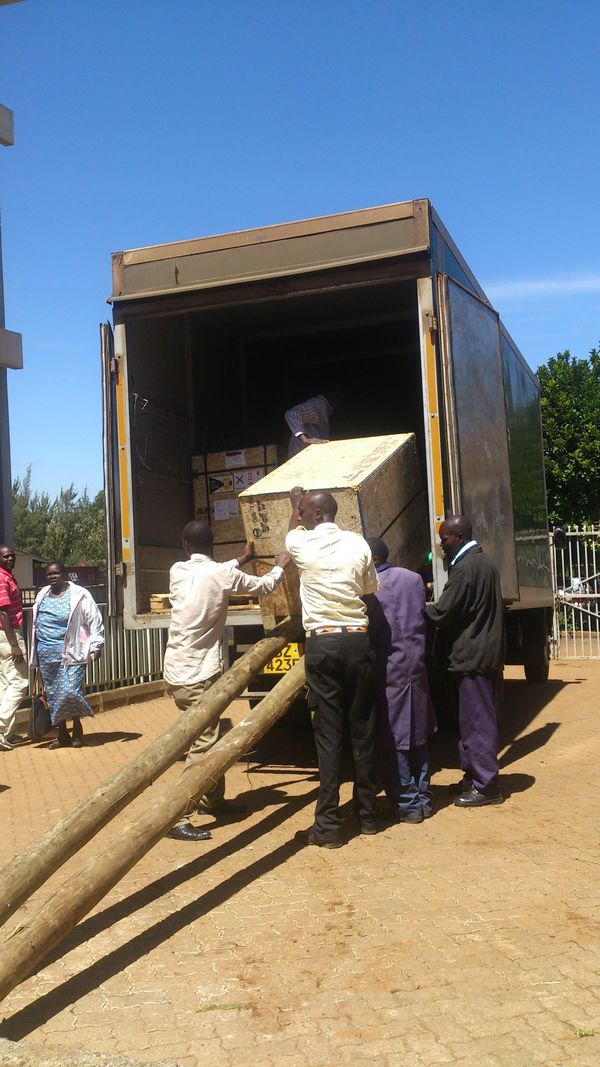
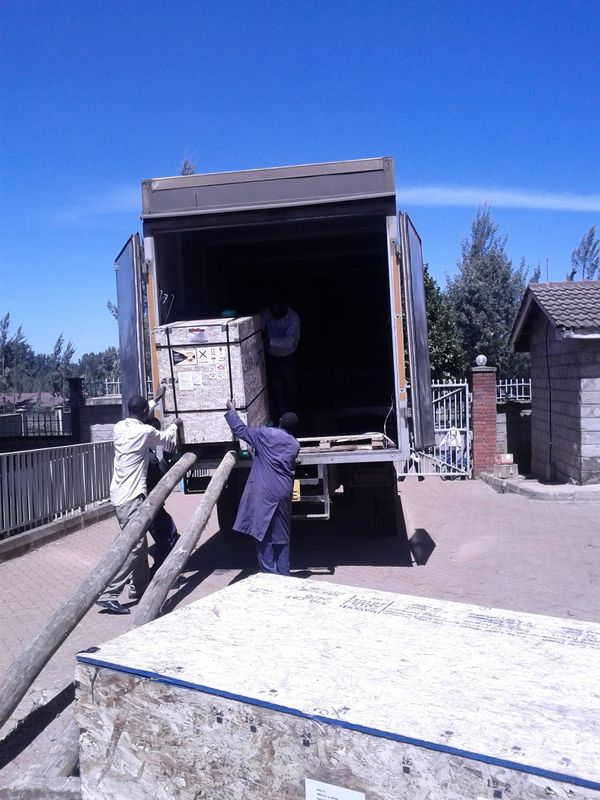
Next, via handcart up to the second floor of the AMPATH building
Phelix Were, Marya Lieberman, and Mercy Maina are all smiling.
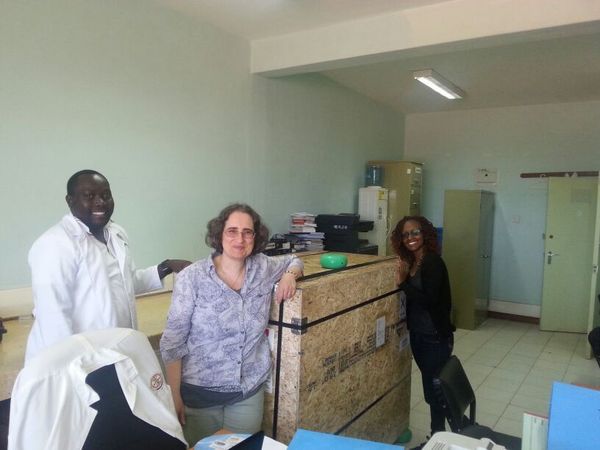
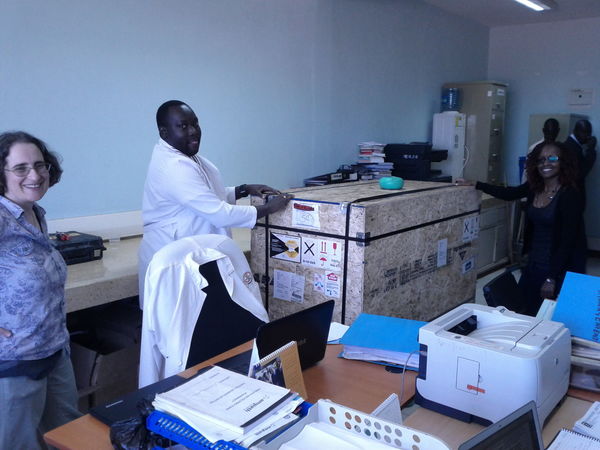
Fortunately we have an electric drill for uncrating the goods. Despite some rather rough treatment, everything inside arrives in good shape.

May 12, 2015: Clearance company won't release crates
The clearance company got the crates through customs, but is holding them pending repayment of an old debt from Moi Hospital. Negotiations ongoing. Since I can't show any pictures of the HPLC system, here is a photo of some cattle at the gate to IU House, where I'm staying; it's pretty common to see cows, goats, and sheep on the roads right outside town:

May 11, 2015: Future home of HPLC facility.
Crates are still in Nairobi....[ominous music]
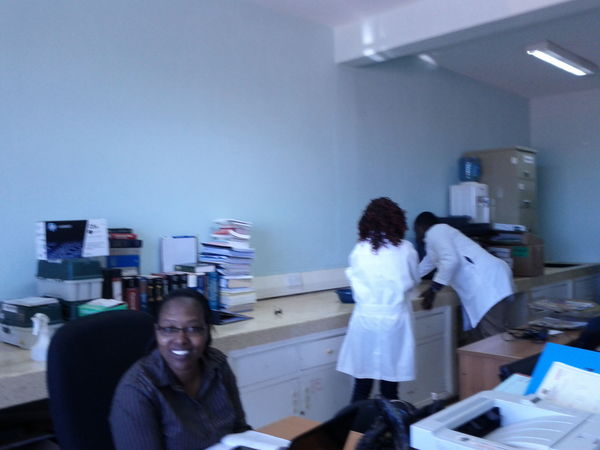
The instruments will go on this counter...Mercy and Phelix move boxes and books while Eunice advises. Through careful scientific experimentation involving the electric teakettle and the circuit breaker box, we determine that the counter is on a 32 amp circuit. The plumber is summoned to unclog the sink drain.
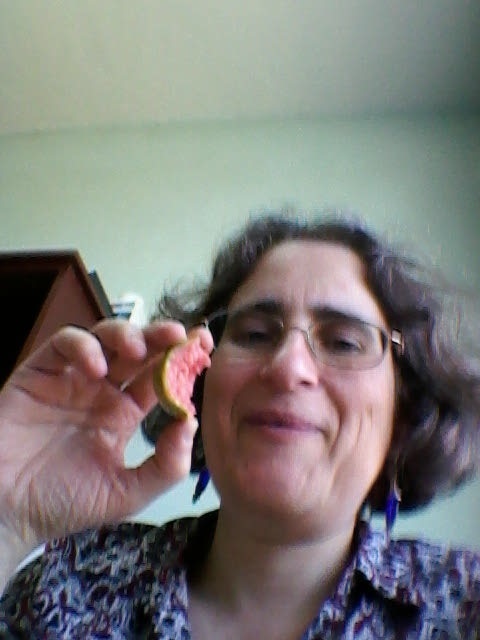
Marya tries a fresh guava and is not sure she likes it.
May 5, 2015: Crates clear customs--all systems go!
Why aren't they being shipped to Eldoret now?
[.....faint ominous music......]
April 30, 2015: Crates arrive in Nairobi
April 27, 2015: Crates shipped to Chicago O'Hare airport
These instruments originally came from Merck South Africa, now they are going back to Africa!
April 23, 2015: Certificate of compliance issued
An inspector drives out from Chicago; everything has to be uncrated and some items unboxed for inspection. Good thing we included the detailed packing lists in the crates and on the boxes. Thanks to Kara Primmer for representing UND and to John Maino of Intertek for clarifying the inspection process.
March 27, 2015: we need inspections of computers and HPLC equipment to obtain certificate of compliance.
We had to demonstrate that the equipment met Kenyan regulatory standards. This is reasonable--there have been problems in the past with all types of non-functional or dangerous "donations" that people have sent to developing countries.
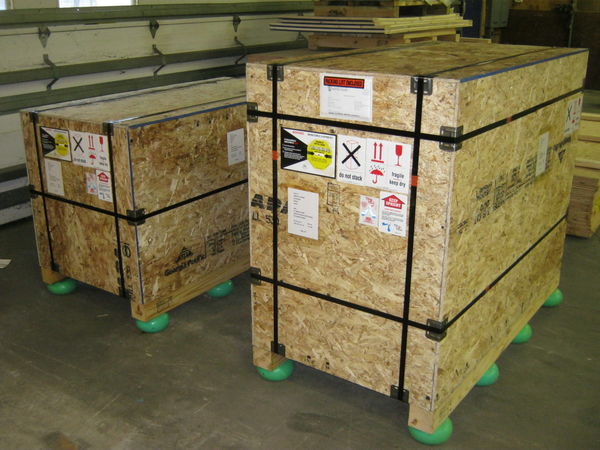
Crates languish in Elhart pending inspection. Nice little air-feet protect them from bumps and jars.
March 26, 2015: packing up the instruments for shipment
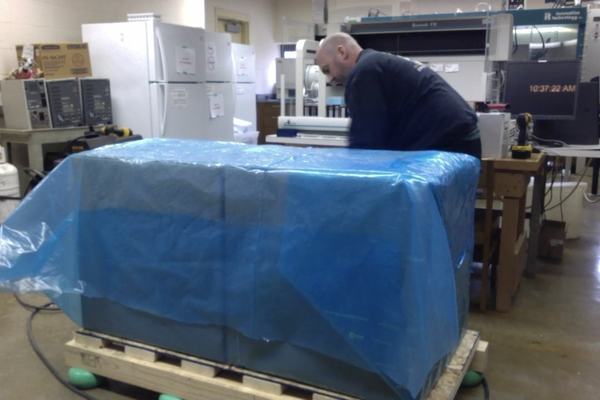
Rachel Svetlanoff and Marya Lieberman packed up supplies and equipment. Detailed lists of contents on boxes and in crates will later prove useful.
Amazing crew from Days Packing and DM Transportation literally built the crate around the shipment. Here, Joe wields a torch to heat seal plastic around the shipment.
March 18, 2015: Kenyan clearance agents MitchellCotts engaged to shepherd the shipment through customs and send it on to Eldoret.
Now we are all set! I'll be in Kenya May 8-27; that should be penty of time to set up the instruments. [....faint hint of ominous music.....foreshadowing.....]
March 4 2015: Repairs and preventative maintenance
After two visits from Todd Rentfrow, the Waters service guy, the instruments we want to send to Kenya are now working beautifully. Undergraduate Steven Froelich takes the lead on setting up the HPLCs and integrating them with the PeakSimple A to D converter and software, aided by Rachel Svetlanoff.
March 4, 2015: Title officially transfered from Killimanjaro School of Pharmacy, to the University of Notre Dame.
Now we can turn around and donate it to MTRH.
Jan 2015: Waters donates HPLC supplies
Matched sets of columns will enable us to do method development at UND and directly transfer the method to the instruments at AMPATH/MTRH.
Jan 2015: Lilly Foundation supports establishment of HPLC lab at AMPATH
This funding will enable us to fix the instruments, buy supplies, and send them off to Kenya.
December 2014: Marya Lieberman picks up 3 HPLCs for use at AMPATH/MTRH.
Each HPLC system weighs about 100 lb. Manuvering them past the spotting robot is not easy.
Two of the instruments have broken syringe pumps...we are going to need to check them all very carefully and make sure they are operating properly before shipment!
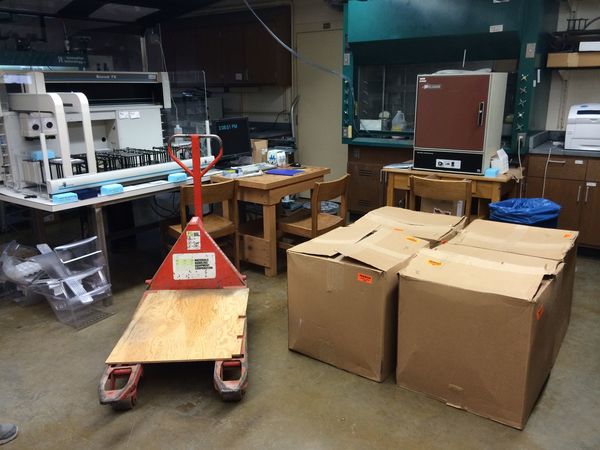
Three complete HPLC systems and a spare UV-Vis detector...
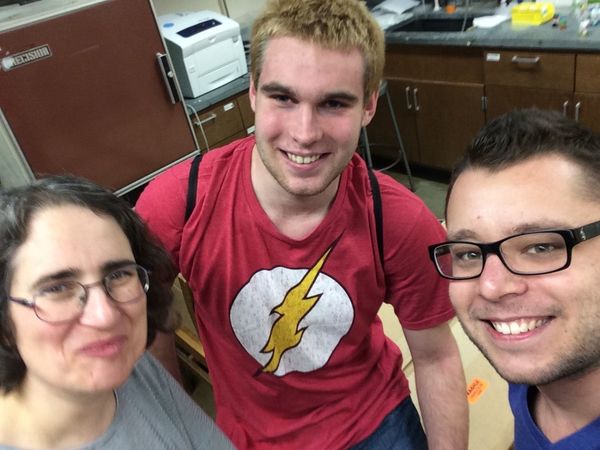
The UND moving crew: Marya Lieberman, Mike Dowd, and Nicholas Myers.
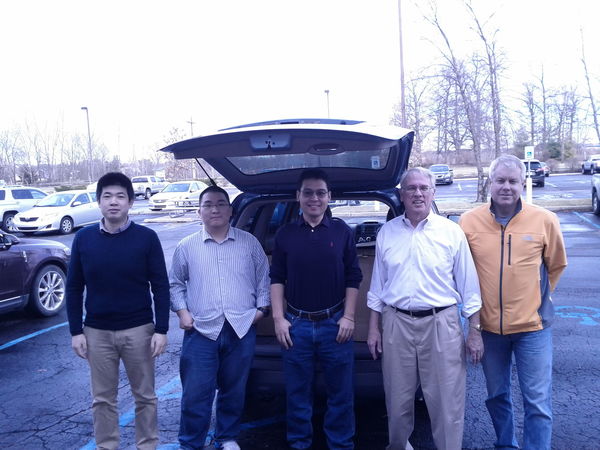
The people from left to right are Yang Song (4th yerar graduate student), Ke Feng (visiting scholar), Haichen Nie (3rd year graduate student), Stephen Byrn, and Dan Smith (Senior Research Scientist).
December, 2013: Steven Byrn transports 10 HPLCs from NJ to Purdue.
The instruments are in New Jersey and title is vested in the Killimanjaro School of Pharmacy. How will we get them to UND, make sure they are running properly, and get them to Kenya? One thing at a time...Stephen Byrn picks them up in a trailer (with a little help) and totes them to Purdue.
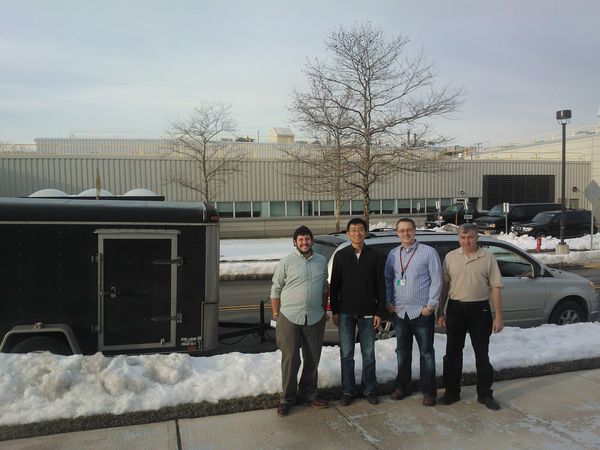
(In the picture taken at Merck in Summit, NJ, on 12/20, from left to right are Chris Kulczar (a Purdue graduate student, who ran a manufacturing lab in Africa last August. Chris is featured as one of the five students helping the world move forward), (http://www.purdue.edu/fivestudents/november-2013/kulczar), Lei Zhu (Lei is a Ph. D. from Wisconsin working in formulation and he got the donations from Agilent), Jim DiNunzio (Jim is a Ph. D. from Texas working in formulation, Jim is the day to day Merck point person for our emerging MS program in Kilimanjaro), the fourth person is one of the Merck technicians that helped us).
August, 2013: Merck donates 10 HPLCs for use in Tanzania and Kenya
We are all thrilled--HPLC is the main tool used to assay the amount of active ingredients in all types of pharmaceuticals. There is not an active HPLC facility in western Kenya. This could be a really high impact facility. But, we need good reliable instruments and well trained staff. I'll post updates on this project as they develop.